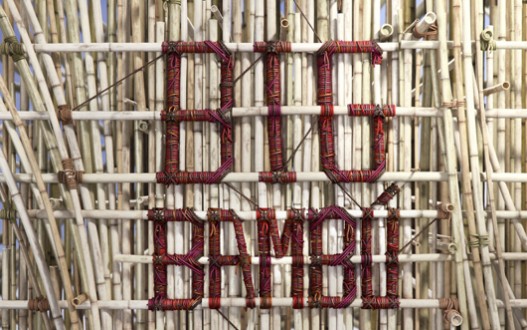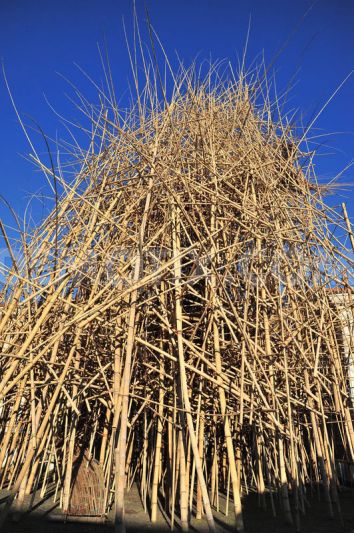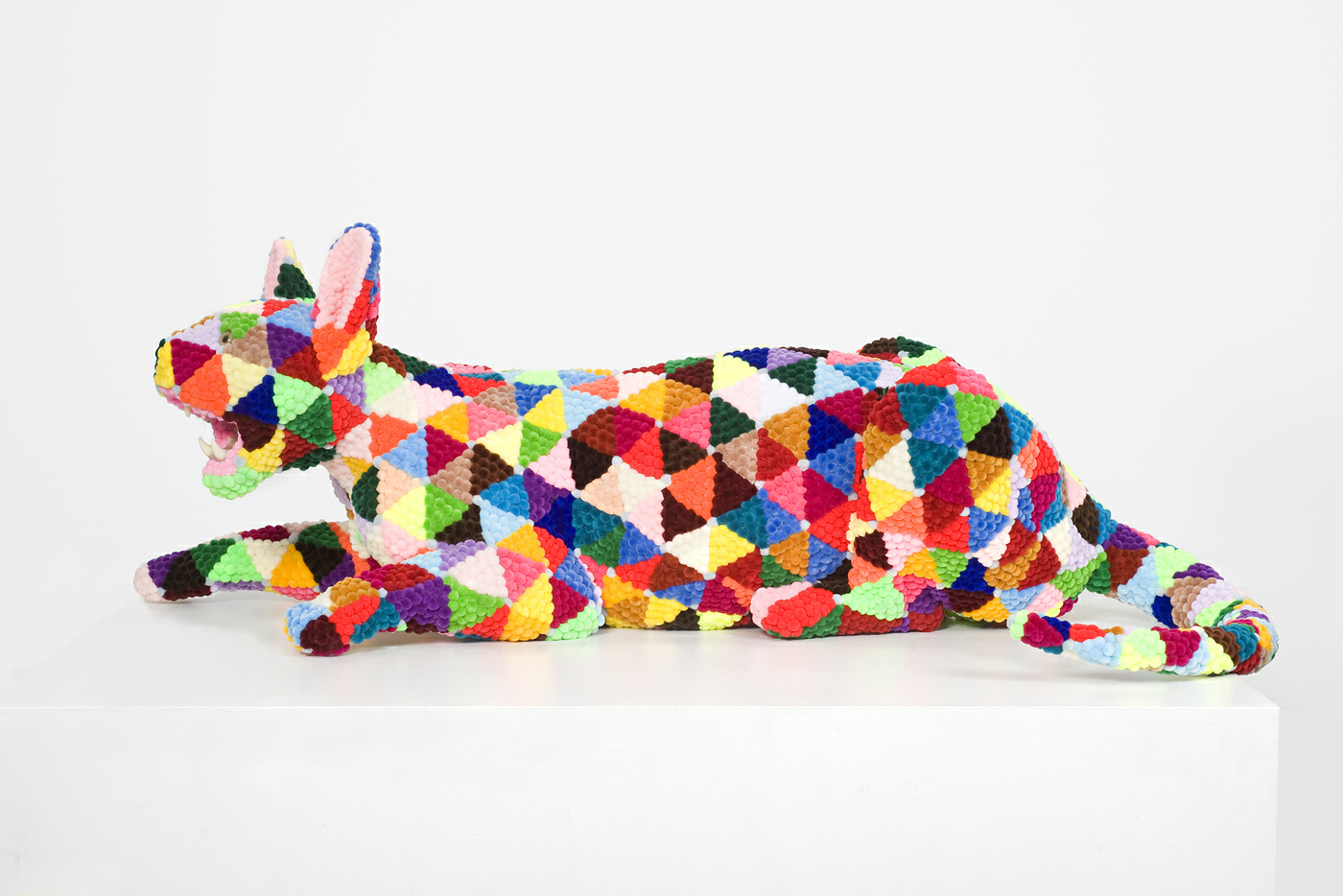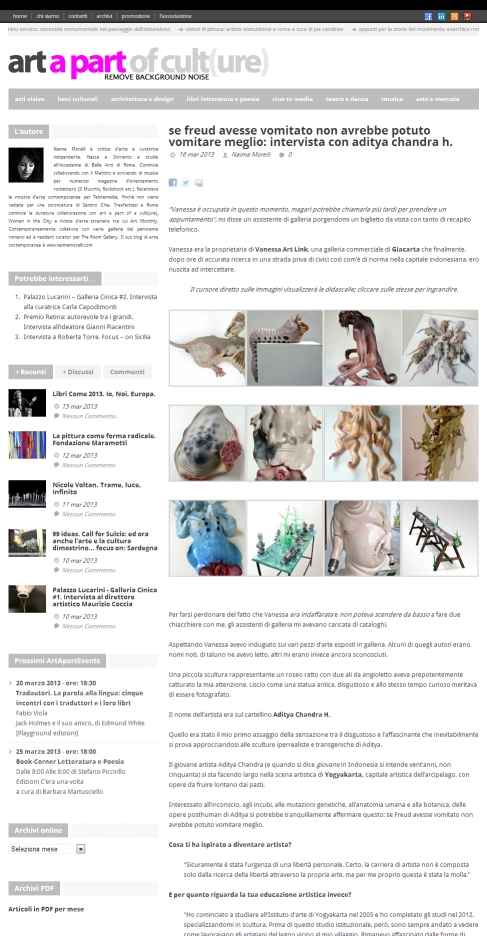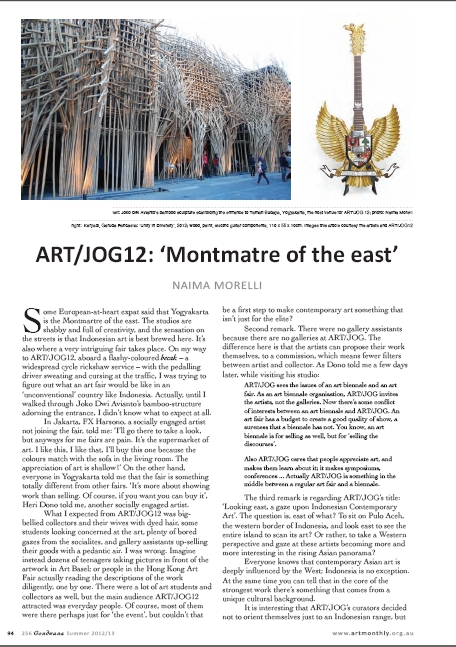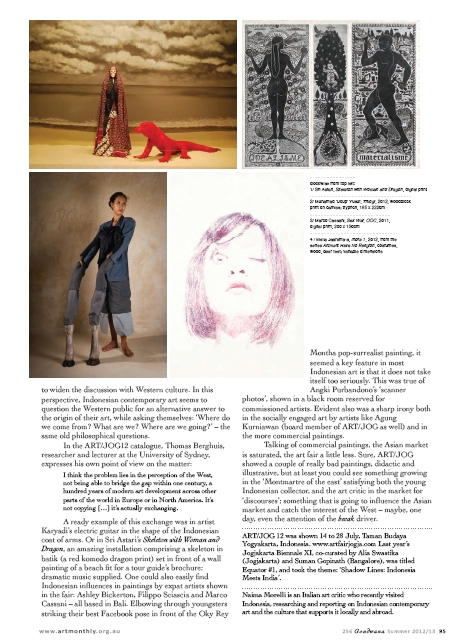
My understanding of Melbourne so far it that everything is about the lanes. The graffiti, the social life, the art exhibitions.
A week ago I was searching for this Trink Tank gallery and, guess what, I ended up in a blind alley. In a blind lane to be precise.
I asked a bunch of people in front of a bar if they know where this Trink Tank gallery was.
A guy with a chef hat smirked:”You just passed it. It’s there!” and he guided me without fail to a shrine in the wall.
Inside the small shrine, like a Neapolitan Madonna, there was Marc Standing’s artwork “The Duchess Of Avon”.
I read the press release that you could take off from a stack of papers. Apparently the shape of the statuette was from a 1970s Avon perfume bottle, which ironically contained Sweet Honesty perfume: “Her tribal painted face is a stark contrast to her Eurocentric bridal ensemble. Coloured thread emanates from her bouquet, enfolding her in an almost suffocating embrace. However, her stoic stance is one of pride and reverence.'” stated the press release.
“So… that’s it!”
“Yeeee!” said proudly the guy “This is the gallery!”
Australia. You can have huge streets, kilometers of nothing just outside the city, the broadest spaces ever and at the same time, in a shady lane in Melbourne, the Trink Tank gallery, probably the one of the world’s smallest gallery.
Read More




